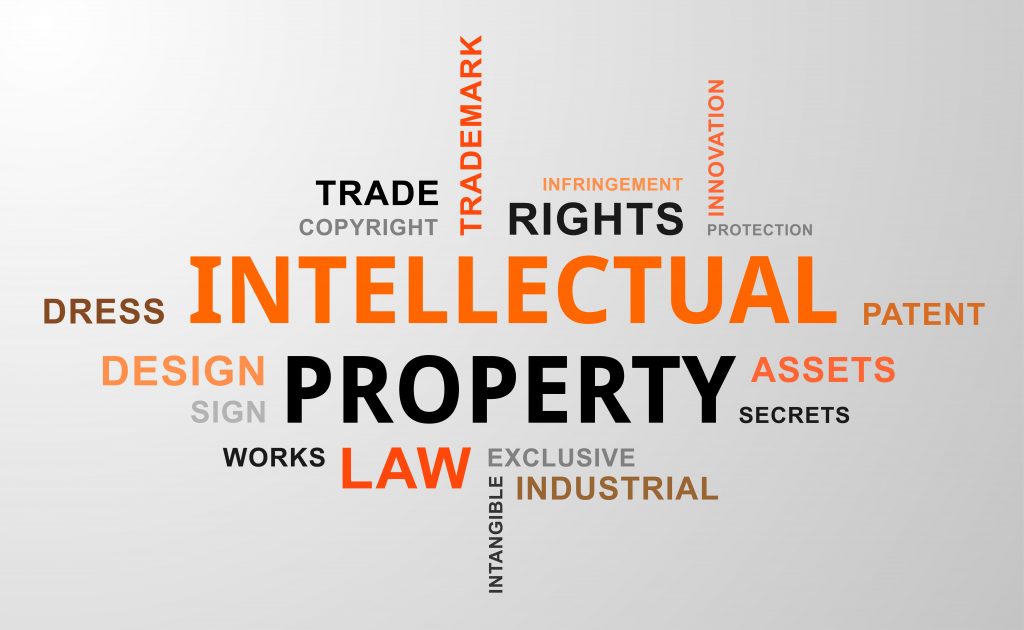Intellectual property (IP) refers to creations of the mind, such as inventions; literary and artistic works; designs; and symbols, names, and images used in commerce. Intellectual Property (‘IP’) rights include patents, copyright, and trademarks. They protect intangible property, such as words, business symbols, product designs, and processes. They enable IP owners to prohibit others from using their property by applying for an injunction.
In order to strike the right balance between the interests of innovators and the wider public interest, the IP system aims to foster an environment in which creativity and innovation can flourish.
IP rights can be licensed or assigned. With a license, the right to use the IP is given to a particular individual for a particular purpose and is often confined to a specific geographical and temporal scope. In exchange for the use of the rights, the IP owner is usually provided with financial incentives. These financial incentives can take the form of royalties, which are paid at regular intervals, or as a one-off initial payment. A business may choose to license IP rights to raise capital, or so that its brand can be used on other products.
An assignment is where the IP is sold to another party. Usually, the person assigning the IP retains no rights to it. An assignment may be made where the owner of the IP no longer has a use for it, or where they wish to raise capital. Assignments are commonly made by freelance workers, such as photographers and website designers, as it may be important for the IP to be owned by the business commissioning the work. Moreover, assignments are frequently made during company acquisitions because the purchasing company is likely to want to be able to use the brand’s name and other IPs.[i]
Types of Intellectual Property Rights
Patents
A patent enables the owner to exclude others from using the invention, as claimed in the application, for a maximum period of 20 years. Patent owners can only enforce their rights against the invention as actually ‘claimed’ in the invention, irrespective of the invention’s real-world application. Accordingly, it is very important that the claims, which are descriptions of the invention’s composition, purpose, and operation, are clear and contain every element of the invention.
Patent protection is territorial. This means that if registered in Nigeria, the patent is not enforceable outside Nigeria. For intellectual property to be considered patentable, the invention must be new, must involve an inventive step, and be capable of industrial application.
Copyright
It is the automatic legal protection given to original creative work such as writing, art, illustration, literary work, photography, music, and sound recordings. Books, articles, music recordings, software, architectural drawings, web content, graphic designs, TV, films, and computer games are all covered by copyright.[ii]
A creative can choose to mark his work with the copyright symbol (©), his name, and the year of creation. Copyright stops others from copying, using, or distributing a creative’s work without agreement. Copyright exists until 70 years from the death of the original creator.
Trademarks
A trademark is a sign capable of distinguishing the goods or services of one enterprise from those of other enterprises. Trademarks date back to ancient times when artisans used to put their signature or “mark” on their products.[iii]
Industrial designs
An industrial design constitutes the ornamental or aesthetic aspect of an article. A design may consist of three-dimensional features, such as the shape or surface of an article, or of two-dimensional features, such as patterns, lines or color
Design rights
Geographical indications
Geographical indications and appellations of origin are signs used on goods that have a specific geographical origin and possess qualities, a reputation, or characteristics that are essentially attributable to that place of origin. Most commonly, a geographical indication includes the name of the place of origin of the goods.
Trade secrets
Trade secrets are IP rights on confidential information that may be sold or licensed. The unauthorized acquisition, use, or disclosure of such secret information in a manner contrary to honest commercial practices by others is regarded as an unfair practice and a violation of the trade secret protection
Conclusion
Protecting intellectual property allows a company to grow by sharing its innovations while maintaining its rights as the owner. The business world is becoming more aware that intellectual property protection is a huge factor in a company’s success and value. Investing in intellectual property protection will prevent the key resources of a company from being abused by its competitors.
[i] https://www.commercialawjournal-bpp.com/post/exploring-intellectual-property-rights#:~:text=IP%20rights%20are%20fundamental%20to,using%20their%20name%20and%20goodwill accessed on 17/11/2023
[ii] https://www.startuploans.co.uk/business-guidance/what-are-intellectual-property-rights/#:~:text=It%20covers%20everything%20from%20your,you%20and%20has%20a%20value accessed on 17/11/2023
[iii] https://www.wipo.int/about-ip/en/ accessed on 16/11/2023
Written by Olalekan O. Elizabeth for The Trusted Advisors
Email us: [email protected]

